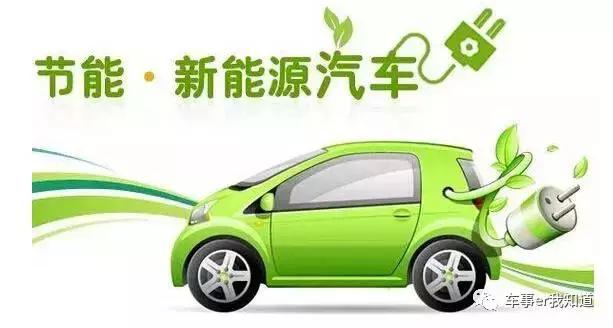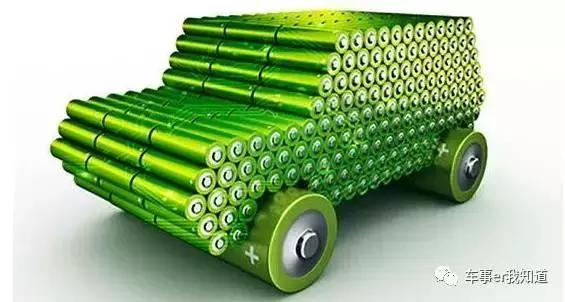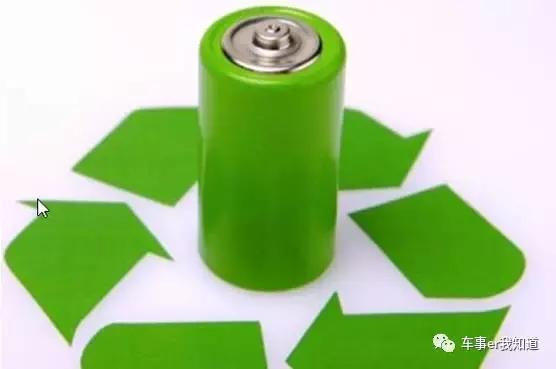According to relevant industry estimates, in 2015 China's new energy vehicle battery cumulative scrap will reach about 2-4 million tons; in 2020, only the cumulative lithium battery scrap will reach 12-17 million tons. As we all know, the battery is a serious pollution type of waste articles, there is a certain threat to the environment. Therefore, the use of waste batteries must be handled without delay. However, at present, the recycling mechanism for waste power batteries in China is not perfect, and there is no clear regulation on the use of batteries for recycling. With the rapid development of new energy electric vehicles, the problem of used batteries will become more and more prominent. Waste power battery policy is ready The National Development and Reform Commission and the Ministry of Industry and Information Technology jointly issued the “Regulation on the Recycling and Utilization of Electric Vehicles Power Battery (2015 Edition)†for comments: First, the main responsibility of recovery Power battery production companies will assume the main responsibility for the recycling of waste power batteries outside of the after-sales service system for electric vehicle manufacturers; cascade battery production companies should assume the primary responsibility for using batteries for cascade recycling, and scrap vehicles for recycling should be responsible for recycling. Destroyed power batteries on cars. Second, with recycling qualified enterprises An electric car after-sales service provider appointed (or authorized) by an electric vehicle manufacturer; a battery dealer designated (or authorized) by a power battery manufacturing company or an operator engaged in power battery replacement (or lease); a cascade utilization company or its designated company (Or authorized) organization; scrapped automobile recycling and dismantling enterprise with power battery recycling conditions; qualified power battery recycling and utilization enterprise; and other enterprises. Third, the power battery design and production technology requirements 1. At the design level, the power battery should emphasize green design and emphasize non-toxic and harmless. The easy-to-remove principle of the power battery should be followed to ensure that the power battery can be safely and environmentally disassembled from the entire vehicle, and that recycled materials are used as much as possible. It is worth noting that this draft of the consultation also emphasizes that the State encourages the standardization of structural design of the power battery, which is intended to improve the cascade reuse through the universality of the power battery. 2. At the dismantling level, the ED requires that EV manufacturers provide battery dismantling technology information when they sell their vehicles, and the battery manufacturer needs to provide dismantling technical information. 3. At the same time, the national level will promote the establishment of a unified power battery product coding system. Battery manufacturers should code all their power battery products and establish a traceability system to track the flow of power batteries and have unique correspondence with battery products and vehicles. According to experts from the China Automotive Technology and Research Center, it is estimated that in 2015, the accumulated scrap of power batteries in China will be approximately 2 to 4 million tons. By 2020, only China’s purely electric multiplies. The cumulative scrap of power batteries used by vehicles and hybrid passenger vehicles will reach a scale of 12-17 million tons. Recycling and reusing power batteries for new energy vehicles has become a problem that cannot be ignored. Lithium batteries will be widely used in electric vehicles. The average service life of power lithium batteries is about 20 years, but for cars, it will only be scrapped in 3-5 years because its capacity is reduced to 80% of the initial capacity. In the following, the cruising range of electric vehicles will be significantly reduced, and power batteries must be replaced in 3-5 years, so the number of scrapped lithium batteries will only increase. Promote the use of end-of-life vehicles to dismantle resource-based equipment manufacturing, actively promote the remanufacturing of engines and main components, implement remanufacturing product certifications, publish remanufactured product technology catalogs, formulate standards and regulations for the recycling of auto parts and components, and realize high end-of-life automotive parts and components Valued use. Carry out trials of the use of new energy vehicles for power battery recycling, establish and improve the standard system for the recycling of used power batteries, and promote the use of waste power battery cascades. Through innovative recycling mechanisms, exploring the establishment of extended producer responsibility systems, and upgrading the technological level of resource utilization, we will create a complete industrial chain of end-of-life vehicle recycling. By 2020, the recycling rate of scrapped vehicles will reach 95%. Carry out demonstration work on the recycling and utilization of new energy power batteries, focusing on the development of new energy vehicles in the Beijing-Tianjin-Hebei region, the Yangtze River Delta, and the Pearl River Delta, and selecting a number of cities to carry out demonstration demonstrations on the recycling of power batteries for new energy vehicles through the Internet of Things, big data, etc. Informatization means, establishing a traceability management system, supporting the establishment of a universal, economically good recycling model, developing cascade utilization and reuse technology research, product development, and demonstration applications. From the perspective of technology policy, at present, China has established a set of standard systems around power battery demolition, packaging and transportation, storage, dismantling, residual energy detection, ladder utilization, and material recycling. In terms of power battery recycling and reuse, Every link is crucial. For example, packaging and transportation, because of the unstable state of used batteries, may be damaged, there is leakage, if not properly packaged and safe handling, in the transport process, it is likely to cause a short circuit, fire, or even an explosion. As the last link of the entire process, the material recovery link can extract valuable materials for use in the manufacturing process of new batteries, thereby turning waste into treasure and reducing environmental pollution. It is understood that the technical route for recycling batteries is quite complicated. For example, in the treatment of lithium batteries, they must first be pretreated, including discharge, dismantling, smashing, and sorting; plastics and iron casing after dismantling can be recycled. Then, the electrode material is subjected to alkali leaching and acid leaching, and then the extraction is performed after various procedures. This complex procedure and high costs have made many recycling companies prohibitive, leading to serious gaps in battery recycling. This should cause the relevant government departments to pay attention to the development of battery disposal methods, and strengthen the implementation and supervision of the policy. Pressure Washer Surface Cleaner Pressure Washer Surface Cleaner, Surface Cleaner,Flat Surface Cleaner,Rotary Surface Cleaner Ningbo Senmiao Trading Co., Ltd. , https://www.senmiaowasher.com

